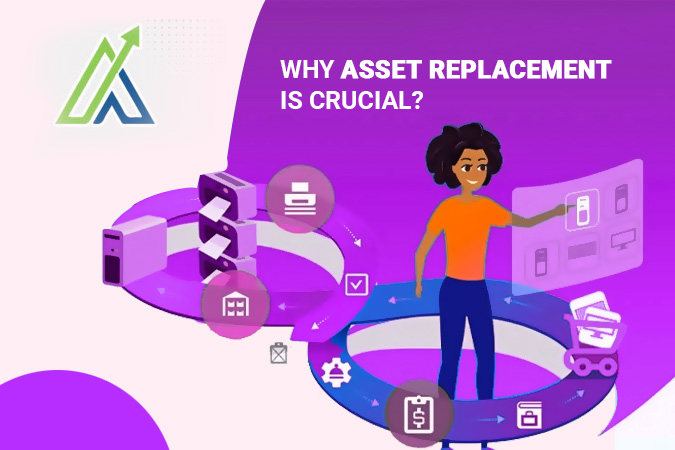Asset replacement is a big deal for any business. Whether you’re running a factory, a tech company, or a transportation service, swapping out old equipment for new is something you can’t ignore.
Let’s break down why it’s necessary and what factors make it a must-do.
1. Old Equipment Wears Out
All machines and tools wear out over time. Old equipment breaks down more often and costs more to fix, causing interruptions and increased expenses.
Example: Think of a 20-year-old conveyor belt in a factory. It keeps breaking down and costs a lot to repair. Swapping it for a new one would save money and reduce downtime.
2. New Technology Rules
Tech is always improving. New equipment usually performs better, uses less energy, and fits better with other modern systems.
Example: An IT firm might ditch its old servers for cloud services. Why? More storage, better security, and lower maintenance costs.
3. Laws and Regulations
Laws change. Old equipment might not meet new safety or environmental standards, leading to fines or shutdowns.
Example: A car maker might need to replace old machinery to meet new emission laws. No one wants to pay hefty fines or halt production.
4. Boost Efficiency
New equipment often means better efficiency. This translates to higher productivity and lower costs.
Example: A delivery company might replace old trucks with new, fuel-efficient ones. This saves on fuel and speeds up deliveries.
5. Safety First
Old, faulty equipment is dangerous. Replacing it can prevent accidents and keep everyone safe.
Example: A construction company might swap out old cranes for new ones to avoid workplace accidents and ensure worker safety.
6. Repair Costs Add Up
Fixing old equipment can get expensive. Sometimes, it’s cheaper in the long run to buy new.
Example: A restaurant might replace an old oven that keeps breaking down instead of spending more on constant repairs.
7. Save Energy
New equipment uses less energy. It costs less and is better for the environment to do this.
Example: An office building might install energy-efficient HVAC systems. Lower utility bills and a smaller carbon footprint are good for business and the planet.
8. Performance Drops
As equipment ages, its performance declines. This can affect product quality and customer satisfaction.
Example: A printing shop might get new high-speed printers to maintain print quality and keep up with demand.
9. Stay Competitive
To stay ahead, businesses need the latest gear. Falling behind on tech can mean losing out to competitors.
Example: A retail store might invest in the latest point-of-sale systems. This improves customer experience and streamlines operations, keeping them ahead of the competition.
Questions to Understand your ability
Qus: Why do businesses really need to replace old assets?
- To show off fancy new equipment
- To cut down on annoying breakdowns and high repair costs
- To make employees happy
- To expand to new locations
Qus: What’s a big win with using new tech for asset replacement?
- More breakdowns and hassles
- Less energy waste and better fit with new systems
- Higher expenses
- More frequent repairs
Qus: How do changing laws push businesses to replace old stuff?
- They love old equipment and want to keep it
- They make it easier to fix old stuff
- They demand meeting new safety and green standards
- They give tax breaks for old gear
Qus: Why does swapping out old equipment boost efficiency?
- Makes work slower and more costly
- Leads to higher productivity and fewer costs
- Adds weight to the equipment
- Reduces worker happiness
Qus: How does getting new assets keep businesses competitive?
- By sticking with outdated gear
- By enhancing customer experience and speeding up operations
- By cutting down on staff
- By avoiding new business methods
Conclusion
Asset replacement isn’t just an option; it’s a necessity. Old equipment costs more to maintain, breaks down more often, and can even put you out of compliance with laws. Upgrading to new technology can save money, boost efficiency, and keep your business competitive. In today’s fast-moving world, staying up-to-date is crucial for success. Businesses that don’t replace outdated assets risk falling behind. So, whether you’re in high school learning commerce or studying to be a Chartered Accountant, understanding the importance of asset replacement is key. It’s all about keeping operations smooth, safe, and profitable.
FAQ's
Old stuff breaks down a lot, costing more to fix and causing interruptions. Swapping out the old gear for new saves money and cuts downtime. It’s that simple.
New tech rocks because it works better, uses less juice, and plays nice with other modern systems. Like, an IT firm switching to cloud services gets more storage, better security, and lower upkeep costs.
Laws change, and suddenly your old gear doesn’t cut it with new safety or green standards. So, you’ve got to upgrade or get slapped with fines and shutdowns. Imagine a car maker overhauling machinery to meet fresh emission laws.
New gear means top efficiency—more productivity, fewer costs. Picture a delivery company tossing old trucks for fuel-efficient ones—less gas money, faster deliveries. Simple as that
Old, busted gear is a ticking time bomb—accidents waiting to happen. Replace it to keep everyone safe. Like a construction company trading out old cranes to prevent accidents and keep workers alive.
Absolutely. Fixing old equipment can drain your wallet. Sometimes it’s cheaper to just buy new. Imagine a restaurant replacing a constantly breaking oven instead of paying for endless repairs.
New gear crushes it in energy efficiency. Bills go down, planet smiles. Picture an office building flipping to energy-efficient HVAC systems—utility costs plummet, carbon footprint shrinks. Total win-win.
To stay in the game, you need the latest tech. Fall behind, you’re toast. Think of a retail store leveling up to the newest point-of-sale systems—customer experience skyrockets, operations run smooth. Stay sharp or get left in the dust.

